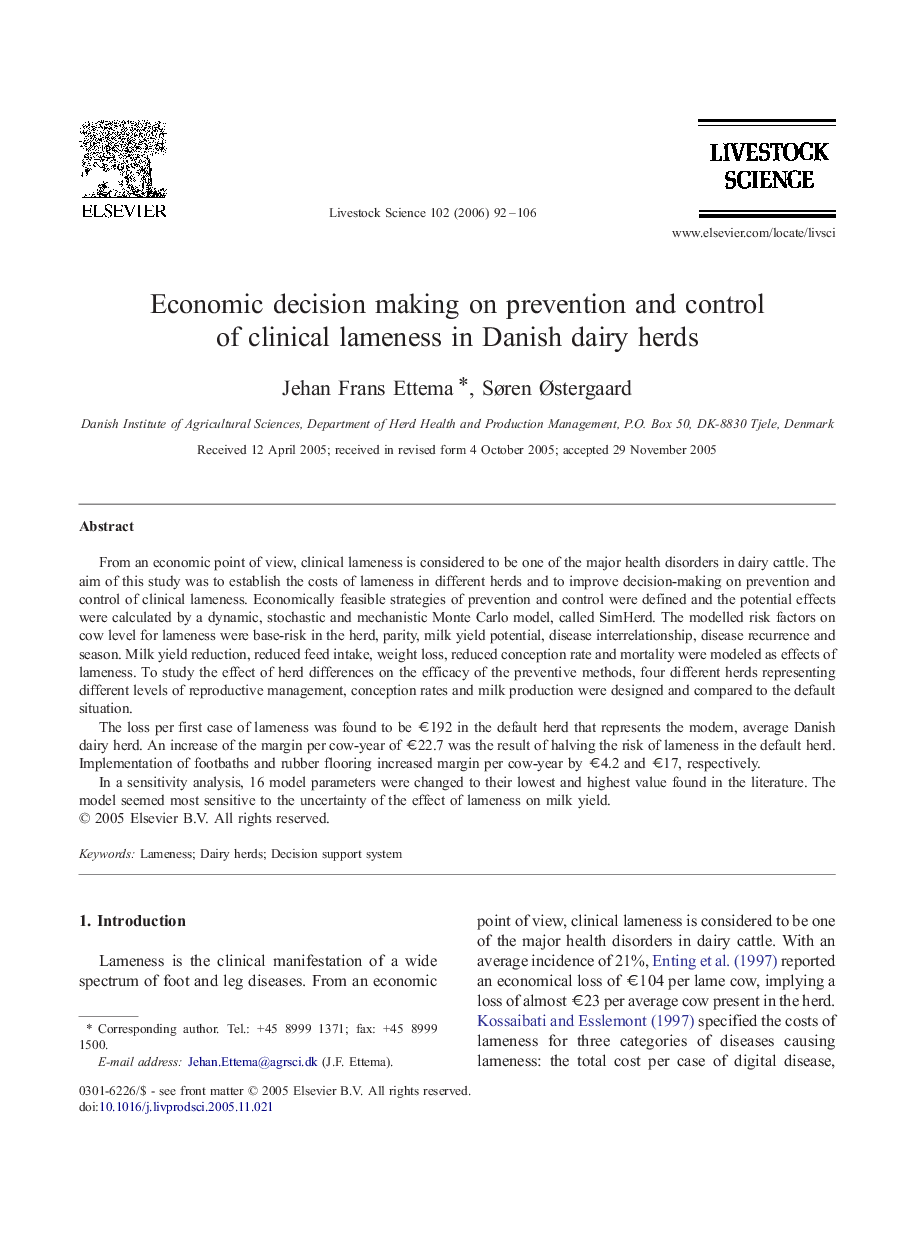| Article ID | Journal | Published Year | Pages | File Type |
|---|---|---|---|---|
| 2449078 | Livestock Science | 2006 | 15 Pages |
From an economic point of view, clinical lameness is considered to be one of the major health disorders in dairy cattle. The aim of this study was to establish the costs of lameness in different herds and to improve decision-making on prevention and control of clinical lameness. Economically feasible strategies of prevention and control were defined and the potential effects were calculated by a dynamic, stochastic and mechanistic Monte Carlo model, called SimHerd. The modelled risk factors on cow level for lameness were base-risk in the herd, parity, milk yield potential, disease interrelationship, disease recurrence and season. Milk yield reduction, reduced feed intake, weight loss, reduced conception rate and mortality were modeled as effects of lameness. To study the effect of herd differences on the efficacy of the preventive methods, four different herds representing different levels of reproductive management, conception rates and milk production were designed and compared to the default situation.The loss per first case of lameness was found to be €192 in the default herd that represents the modern, average Danish dairy herd. An increase of the margin per cow-year of €22.7 was the result of halving the risk of lameness in the default herd. Implementation of footbaths and rubber flooring increased margin per cow-year by €4.2 and €17, respectively.In a sensitivity analysis, 16 model parameters were changed to their lowest and highest value found in the literature. The model seemed most sensitive to the uncertainty of the effect of lameness on milk yield.
